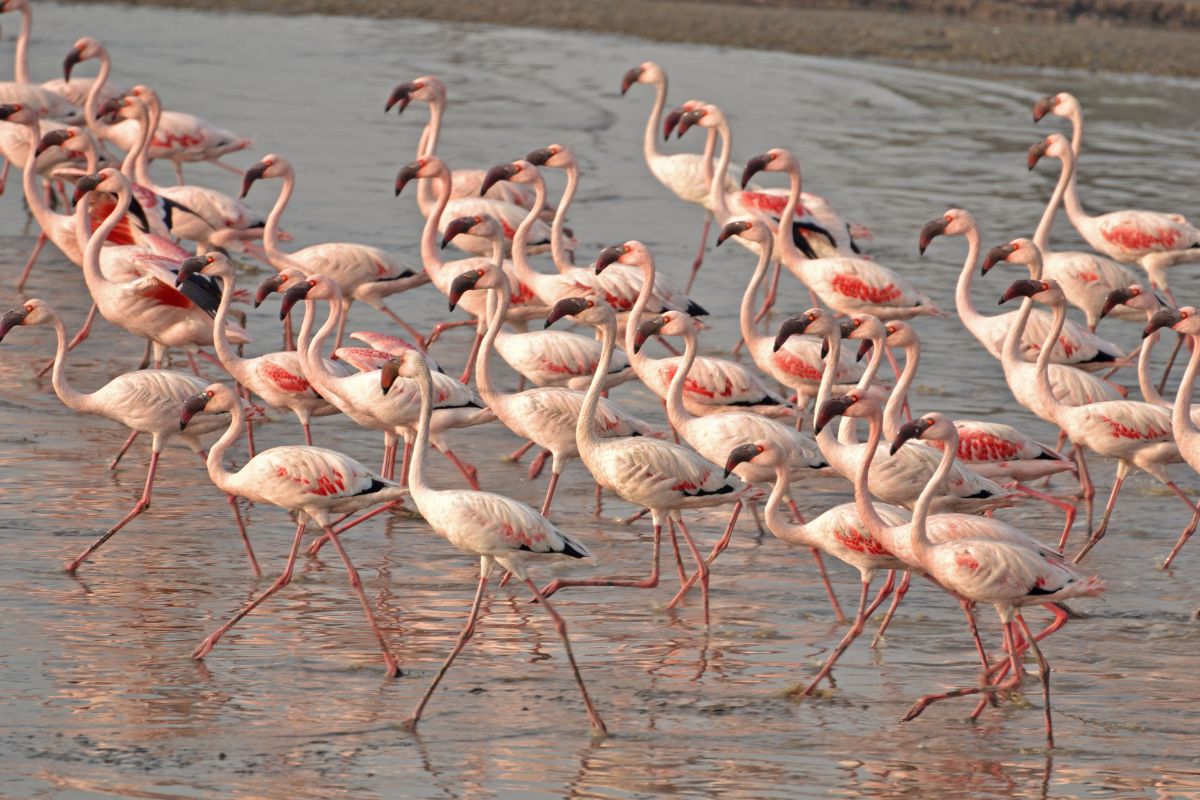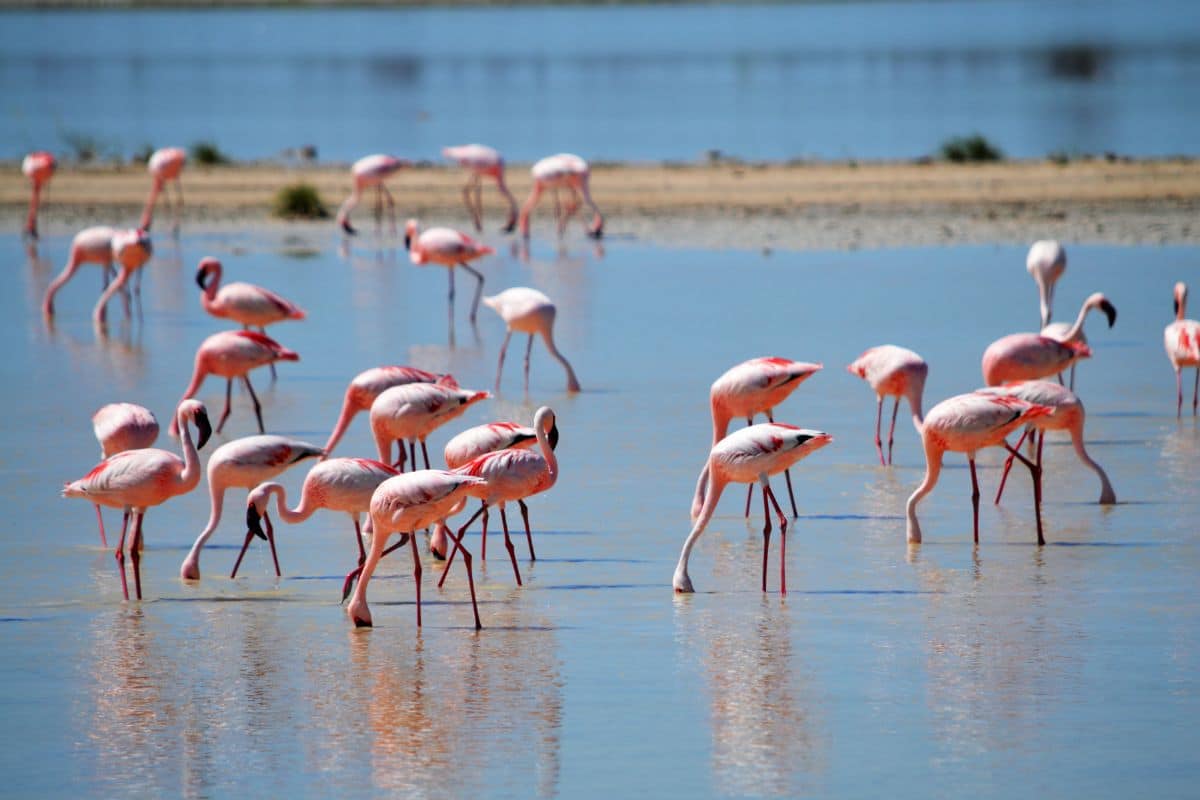You may be familiar with a murder of crows, a gaggle of geese, or a parliament of owls, but what about flamingos?

Flamingos are social birds and form colonies that can include tens of thousands of birds.
Whether you come across a group of the pink feathered, skinny-legged birds in the wild, in a zoo, or in a photograph, you might wonder, what is a group of flamingos called?
Contents
Names for a Group of Flamingos
Like many other types of birds, when flamingos fly in groups, they are called a flock.
However, a group of flamingos on the ground is called a flamboyance. A flamboyance of flamingos is the perfect name for a group of brightly colored birds that stand out from their surroundings.
Flamboyance of Flamingos Meaning
The word “flamboyance” comes from an Old French word meaning blazing, flaming. A group of flamingos standing in a green, brown, and gray salt flat or lake definitely makes a colorful, fiery impression in a visually drab environment. Many species have black or black-tipped beaks, which add a striking contrast to their appearance.
Today, the word flamboyance comes with the connotation of someone with confidence who shamelessly flaunts their brightly colored and exuberant style and personality. Flamingos are known not only for their bright colors but for their ability to stand on one leg and their nasally honk. Flamingos are a bird that stands out in every way.
How Flamingos Get Their Flamboyant Colors

Flamingos’ feathers range in colors from pale pink to deep crimson. The coloring of their legs, bills, and faces can be red, pink, or orange.
A group of flamingos is called a flamboyance because of their blazing colors, but what gives them those colors?
Proving the phrase, “You are what you eat,” flamingos’ colors come from their diet. Flamingos are water birds and filter feeders. They stir up shallow waters, dip and sweep their beaks in the water, and push out the water through comb-like plates on the edge of their beaks.
Their diet includes algae, shrimp, mollusks, insect larvae, and cyanobacteria, things high in alpha and beta carotenoids, which, when eaten and dissolved in fat, are deposited in their feathers, giving them their rosy pink or blazing crimson color.
Flamingos with a diet low in carotenoids will lose their pigment through molting and grow very pale feathers. Zoos tend to feed their flamingos a carotenoid-rich diet to ensure their bright color and flamboyance.
